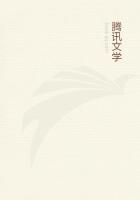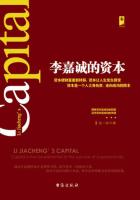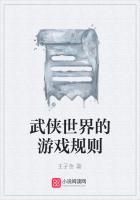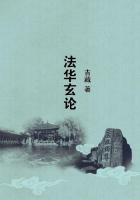According to Lord Kames, in Iceland before the plague (about 1710) families of from 15 to 20 were quite common. The old settlers in cold North America were always blessed with large families, and Quebec is still noted for its prolificity. There is little difference in this respect among nations, woman being limited about the same everywhere, and the general average of the range of the productive function remaining nearly identical in all nations. Of course, exception must be made as to the extremes of north or south.
Ancient and Modern Prolificity.--Nor is there much difference between ancient and modern times. We read in the writings of Aristotle, Pliny, and Albucasis of the wonderful fertility of the women of Egypt, Arabia, and other warm countries, from 3 to 6children often being born at once and living to maturity; but from the wonder and surprise shown in the narration of these facts, they were doubtless exceptions, of which parallels may be found in the present day. The ancient Greek and Roman families were no larger than those of to-day, and were smaller in the zenith of Roman affluence, and continued small until the period of decadence.
Legal Encouragement of Prolificity.--In Quebec Province, Canada, according to a Montreal authority, 100 acres of land are allotted to the father who has a dozen children by legitimate marriage.
The same journal states that, stimulated by the premium offered, families of 20 or more are not rare, the results of patriotic efforts. In 1895, 1742 "chefs de famille" made their claim according to the conditions of the law, and one, Paul Bellanger, of the River du Loup, claimed 300 acres as his premium, based on the fact that he was the father of 36 children. Another claimant, Monsieur Thioret de Sainte Genevieve, had been presented by his wife, a woman not yet thirty years old, with 17 children. She had triplets twice in the space of five years and twins thrice in the mean time. It is a matter of conjecture what the effect would be of such a premium in countries with a lowering birth-rate, and a French medical journal, quoting the foregoing, regretfully wishes for some countrymen at home like their brothers in Quebec.
Old Explanations of Prolificity.--The old explanation of the causation of the remarkable exceptions to the rules of prolificity was similar to that advanced by Empedocles, who says that the greater the quantity of semen, the greater the number of children at birth. Pare, later, uses a similar reason to explain the causation of monstrosities, grouping them into two classes, those due to deficiency of semen, such as the acephalous type, and those due to excess, such as the double monsters.
Hippocrates, in his work on the "Nature of the Infant," tells us that twins are the result of a single coitus, and we are also informed that each infant has a chorion; so that both kinds of plural gestation (monochorionic and dichorionic) were known to the ancients. In this treatise it is further stated that the twins may be male or female, or both males or both females; the male is formed when the semen is thick and strong.
The greatest number of children at a single birth that it is possible for a woman to have has never been definitely determined. Aristotle gives it as his opinion that one woman can bring forth no more than 5 children at a single birth, and discredits reports of multiplicity above this number; while Pliny, who is not held to be so trustworthy, positively states that there were authentic records of as many as 12 at a birth.
Throughout the ages in which superstitious distortion of facts and unquestioning credulity was unchecked, all sorts of incredible accounts of prolificity are found. Martin Cromerus, a Polish historian, quoted by Pare, who has done some good work in statistical research on this subject, says a that Margaret, of a noble and ancient family near Cracovia, the wife of Count Virboslaus, brought forth 36 living children on January 20, 1296.
The celebrated case of Countess Margaret, daughter of Florent IV, Earl of Holland, and spouse of Count Hermann of Henneberg, was supposed to have occurred just before this, on Good Friday, 1278.
She was at this time forty-two years of age, and at one birth brought forth 365 infants, 182 males, 182 females, and 1hermaphrodite. They were all baptized in two large brazen dishes by the Bishop of Treras, the males being called John, the females Elizabeth. During the last century the basins were still on exhibition in the village church of Losdun, and most of the visitors to Hague went out to see them, as they were reckoned one of the curiosities of Holland. The affliction was ascribed to the curse of a poor woman who, holding twins in her arms, approached the Countess for aid. She was not only denied alms, but was insulted by being told that her twins were by different fathers, whereupon the poor woman prayed God to send the Countess as many children as there were days in the year. There is room for much speculation as to what this case really was. There is a possibility that it was simply a case of hydatidiform or multiple molar pregnancy, elaborated by an exhaustive imagination and superstitious awe. As late as 1799 there was a woman of a town of Andalusia who was reported to have been delivered of 16 male infants, 7 of which were alive two months later.
Mayo-Smith remarks that the proportion of multiple births is not more than 1 per cent of the total number of parturitions. The latest statistics, by Westergaard, give the following averages to number of cases of 100 births in which there were 2 or more at a birth:--Sweden, 1.45
Germany, 1.24
Bavaria, 1.38
Denmark, 1.34
Holland, 1.30
Prussia, 1.26
Scotland,1.22
Norway, 1.32
Saxony, 1.20
Italy, 1.21
Austria, 1.17
Switzerland, 1.16
France, 0.99
Belgium, 0.97
Spain, 0.85
In Prussia, from 1826 to 1880, there were 85 cases of quadruplets and 3 cases of 5 at a birth.


